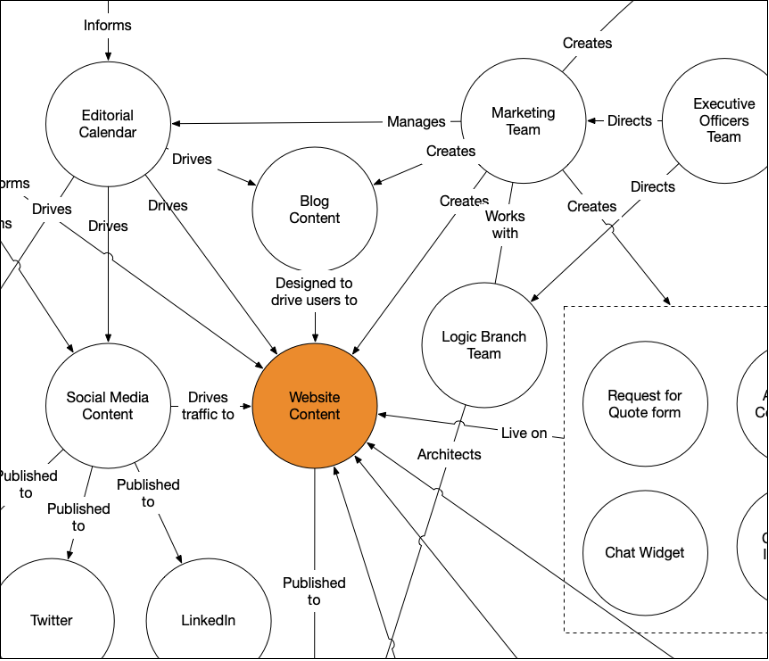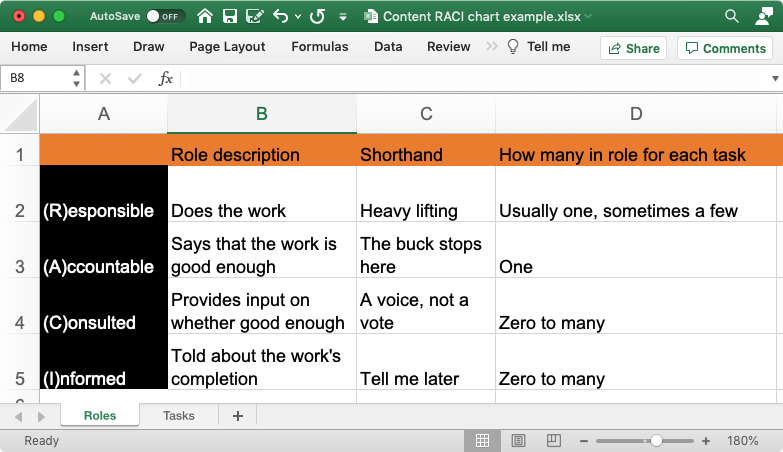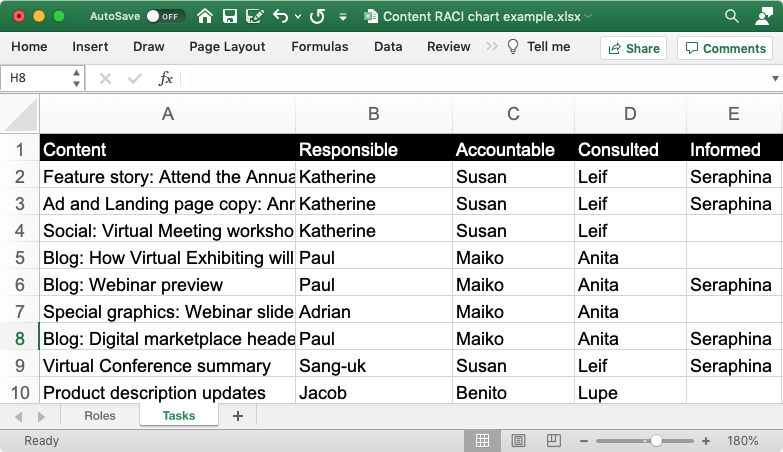Driving Design with a Well-defined Content Strategy: Part One
The French coined the culinary phrase mise en place which cooks of all kinds understand. According to Merriam-Webster it means "a culinary process in which ingredients are prepared and organized (as in a restaurant kitchen) before cooking." Mise en place is all about preparation and having your ingredients and utensils close at hand. Designers—a type of cook, if you will—live and thrive by that process.

Yes, what designers require to get cooking is text, images, video, branding, logos, etc. Developers need it as well. They base structural decisions on how the system will store, access, and output content. But it's often the client that needs to assemble and generate that content both for the near-term design process and for the long-term care and nourishment of their software or website. That's what this two-part article is about: the process that should start before design and development begins. That process is a structured way of generating working content for what will become your living, breathing, hard-working software or website.
The Project Charter
Already generating ideas about interface features and functions your project should have? It's exciting, yes. Your designer will be keen to oblige, but before you go too far down that path, pause and take a step back. Are all the parties aligned? Is everyone clear on the goals of the project. How does this feature support those goals? At some point, stakeholders will disagree on how proposed features will work, and you'll need a way to resolve it. A project charter is the overall plan that your organization can refer to. Formalize your project goals, keep them in an accessible place, and check in with them periodically. In general, your document should contain these basic items:
- List of individuals leading the project
- Project description
- Project purpose
- Goals and outcomes
- Scope
- Main deliverables
- Benefits
- Budget requirements
- Signoff on all of the above by the project owners
Getting your entire team aligned on these items is more than a good exercise, it’s the building of the project’s foundation.
The Content Inventory
If you are approaching a re-design, you already have content. You'll need to make decisions about how it fits into the new plan and what new types of content you might need. A content inventory will enlighten you. It may surprise you with content that you can leverage and ways you can leverage it. It will ensure that your new design has effective ways to present the content. It will facilitate choosing what should stay and what should go. It will make you aware of what you don't have but need to develop.
The only tool you need for this is a spreadsheet. List every page of your site and what it does and what content is on it: text, graphics, video, forms. Also include the content living outside of the system. Perhaps you have social media channels and advertising. Include this content in your inventory. Reserve a column to rate the value of each item.
Content Ecosystem Map
As you are doing an inventory, map out the relationships this content has with other content, with your organization, and with your users.
- What types of content are already out there or being produced by the organization?
- Who in the organization creates those content types, who approves them, and who publishes or delivers them, and who benefits utilizes them?
Get your stakeholders together and diagram this out. It can be as simple as a digital whiteboard or a Visio document. Make sure it's easy to change what you draw up as the diagram grows and evolves. For more on this concept, see this series of articles by Scott Kubie.

Content Governance Framework
A content governance framework is a simple chart of who does what. It documents the roles and responsibilities of those involved in the lifecycle of your content. That knowledge may be something commonly assumed in your organization, but clarity can remove risk and streamline work by calling out the appropriate person for the task. For this consider a simple RACI chart. The acronym RACI refers to the roles you are documenting: Responsible, Approver, Consulted, Informed. Determine who in your organization functions in those roles. You can read more about RACI chart use here.


After you've taken these steps, you will have
- A guiding document of the goals of your software or website
- A good picture of what content you have
- Knowledge of where needed content can be found or how it can be generated in your organization
- Clear roles of who will create and shepherd your content
Are we cooking yet?
We're close. Preheat the oven; part two of this blog will outline the content strategy and give you a framework for the editorial calendar.
Creating a content strategy is a team effort. It is a fair bit of work, but the effort can save you from flailing around trying different solutions and features. It can also prevent you from creating a feature that you later have difficulty providing content for. Content strategy is not something that can be done for your organization, but it is something that you can get some guidance with. If you choose Logic Branch for your custom software or website project, we can help you pull together your content strategy. Call or drop us a line and chat with us. We can help you get things cooking.
Subscribe to our email list and we'll let you know about future blog posts.